Yellowhammers and Environmentalism: Following the Path of Law’s Alabama Brigade to Gettysburg (part two)
This post continues my story of following Law’s Brigade and delves into the unit’s background.
Joe Loehle and I were at our starting off point, Raccoon Ford, where the area had layers of historical depth. We were where Evander McIver Law’s newly-formed Alabama Brigade was posted in early June 1863. I wanted to explore the area longer and look for campsite remains from the winter of ’63-’64 along the south side of the Rapidan River, but we had many other places to hit that day. Attesting to the thickness of history, the 4th Alabama Infantry’s Adjutant, Robert T. Coles, wrote, “The position assigned the 4th Alabama on the Rapidan at Raccoon Ford above Fredericksburg was the same which Lafayette crossed on his march to Yorktown in June 1781.”
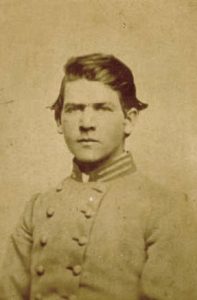
An act by Confederate Congress passed in 1862, brigaded regiments generally by state. This act made Evander Law’s brigade completely “Yellowhammer” by January 1863. Yellowhammer was the state bird, and which had become the nickname of Alabama troops.
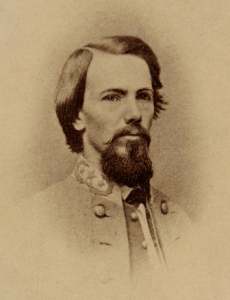
On Wednesday, June 3rd, 1863 General Law’s Brigade – the 4th, 15th, 44th, 47th, and 48th Alabama regiments, roughly 2,050 troops, from John Bell Hood’s 7,400-man division, of James Longstreet’s 21,000-strong First Corps, of Robert E. Lee’s 70,000-man Army of Northern Virginia — moved from Raccoon Ford, north, towards Culpeper, in what would become known as The Gettysburg Campaign. A masse on the move — I have always been curious as to how many wagons, ambulances, horses and mules supported this operation.
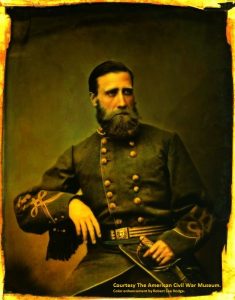
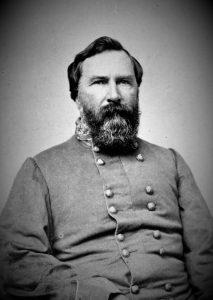
The Penny/Laine book had a good amount of detail, including a breakdown of the brigade organization, which gave us a better feel for unit operation and cohesion. The brigade staff was 17 total – including adjutants, Quartermaster officers, Commissary officers, Ordnance officers, Couriers, 1 Ambulance Driver, 2 Blacksmiths, a Brigade Mail Carrier, etc.
Beyond brigade staff, the collective regimental staffs, and supporting detached service troops, were illustrative of all the tasks for a unit to exist “in the field of operations”. There were 32 teamsters, 3 drivers, 8 pioneers, 3 signal corpsmen, 19 musicians, 4 ambulance drivers, 5 members attached to ordnance department, 12 members attached to the quartermaster department, 12 members attached to the commissary department, 10 hospital stewards, 2 blacksmiths, and 3 butchers. So many of the earlier named positions did not require weapons, being non-combatant, that I pondered how many of those tasks were taken on by the enslaved.
Additionally, there were 2 couriers, 1 scout, 4 provost guards, 5 color-bearers, 3 sergeant-majors, 5 adjutants, 5 Majors, 5 Lieutenant Colonels, and 5 colonels, and 17 miscellaneous staff. These numbers help show the sense of scale in a brigade command.
The 4th Alabama Infantry regiment mustered-in and organized during the spring of 1861, with companies from the northwest area of the state around Florence, north-central Huntsville, and Tuskegee, but mostly from the “black-belt” region of lower Alabama. Like with many Confederate regiments, there was a broad socio-economic and cultural divide – plantation-class boys mixed with subsistence farmers from the mountains, and so on – yet all were unified in 1861 in the fight against invading Federal armies. When the 4th Alabama Infantry was organized Evander Law was elected Lieutenant Colonel.

The 4th Alabama, being an early-war volunteer regiment, had many colorful company names – “The Tuskegee Zouaves, Magnolia Cadets, Canebrake Rifles, The North Alabamians”, and so on. These fiery secessionists had fought hard and had been heavily bloodied at First Manassas, where Law was wounded. His charismatic leadership and coolness under fire solidified his reputation with the men of the 4th. In October 1861 Law was elected Colonel of the 4th Alabama. In early 1862 they were transferred to the Peninsula, being added into General W.H.C. Whiting’s Brigade. Law commanded Whiting’s Brigade at Seven Pines, The Seven Days, Second Manassas, and Sharpsburg.
Like many units in The Army of Northern Virginia, by the fall of 1862 the 4th was a mere shell of their 600-strong force they had fielded at First Manassas. By the time of Gettysburg the 4th Alabama had 309 men, commanded by Lieutenant Colonel Lawrence H. Scruggs.
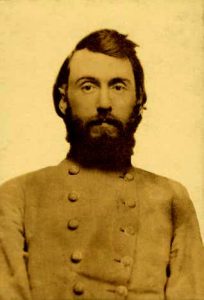
The 15th Alabama Infantry was from the south-eastern part of the state’s fertile “black-belt” region. Some of their colorful company names included Co. C’s “Macon County Commissioners”, Co. D’s “Fort Browder Roughs”, Co. G’s “Henry Pioneers, and Co. K’s “Eufaula Guards”. They had been with Stonewall Jackson (in Trimble’s Brigade of Ewell’s Division) since Front Royal — fighting in the famous Valley Campaign, and then a few weeks later The Seven Days battles for Richmond, Cedar Mountain, Second Manassas, Harpers Ferry, and Sharpsburg in 1862. The 15th Alabama Infantry at Gettysburg – numbering 543 men, was the largest regiment in the Law’s Brigade. They would be commanded by their would-be famous Colonel, William C. Oates. The 15th would become the well-known regiment that faced off against the legendary 20th Maine at Little Round Top at Gettysburg.

The 44th, 47th and 48th Alabama’s, where recruited just prior to the infamous Confederate Conscription Act of 1862 — avoiding the stigma of conscripts and receiving a bounty. Nevertheless they earned the name, “The Fortykins”, as they were jokingly called by the 4th and 15th Alabama — those two being “early-war” volunteer regiments.
The 44th Alabama had been recruited mostly in Selma from companies with such names as Co. D’s “Kenan Musketeers”, Co. E’s “Sallie Ratcliffe Guards”, Co. H’s “Dawson Warriors”, and others. They had fought in Ambrose Wright’s Brigade at Second Manassas, and Sharpsburg’s Bloody Lane — suffering 47% casualties. In November of 1862 they would be transferred to Law’s Brigade. At Gettysburg the 44th Alabama would field 372 men, led by Colonel William F. Perry, a 30-year old teacher from Tuskegee.
The 47th and 48th Alabama were known as the “Twin Regiments”, being recruited on the same day in May 1862, and just seven miles apart. The 47th was organized at Loachapoka from Co. B’s “Tallapoosa Tigers”, Co. C’s “Jeff Holly Guards”, and Co. K’s “Goldwaithe Guards” and others. The 48th was organized at Auburn from Co. A’s “Jackson Boys”, Co C’s “Mountain Rangers”, Co. E’s “Jacksonians”, Co. F’s “Jeff Davis Boys”, Co H’s “Cherokee Grays”, and others.
In Virginia the Twin Regiments joined Taliaferro’s (often pronounced “Tolliver’s”) Brigade of Stonewall Jackson’s Division. The Twin Regiments lost heavily after being flanked in their first battle, at Cedar Mountain. A few weeks later at Second Manassas they fought well defending the famous railroad cut. Two and-a-half weeks afterward, at Sharpsburg, the 47th numbered just 147 men, and the 48th was down to 163. They both fought in the tempest against the famed Federal “Iron Brigade” on the Hagerstown Pike on the morning of September 17th. The 47th had just 16 men to answer their roll-call the next day. The 47th Alabama would have 418 men in the ranks at Gettysburg, under the command of Colonel James W. Jackson, a 31-year old physician from Fayette, Alabama. The 48th Alabama would have 394 men present at Gettysburg, led by Colonel James W. Sheffield, a 48-year old farmer from Guntersville.
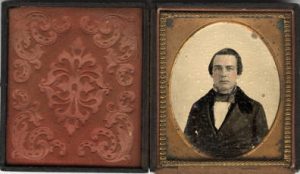
After the bloody contests of 1862 most of these Alabama regiments would not see fighting like they had until the summer of 1863. However, at Fredericksburg in December 1862 the 4th and the 44th, under Law, were in engaged, and even attacked. The other Alabama regiments that would become part of Law’s Brigade stayed in their earthworks, being mostly shelled, and did not receive a Federal attack on their fronts.

Law’s Brigade would miss the Army of Northern Virginia’s climactic victory at Chancellorsville –having been transferred to the Department of North Carolina and Southern Virginia in February 1863, with Longstreet, Hood, Pickett, et al. – participating in the Suffolk Campaign.
Much of the above information was consumed because the historical interpretation group I was part of, The Southern Guard, would be conducting a Civil War living-history program with a specific focus. We wanted to be fortified with knowledge before the Gettysburg NPS program so that we were capable of speaking with the visiting public. The Gettysburg living-history event was the impetus to dig deeper into Law’s Brigade history at a specific moment in their past; thus, making connections that furthers a part of the Civil War narrative, which compels one to ask more questions.
The brief research we did on Law’s Brigade triggered me to wonder how much more information on them is still unknown and unpublished. It furthered a thought I had as to why the Civil War is so big in our memory. The masse data on the subject is overwhelming. Of course the issues of the War are huge, the technological advances were massive, the death and maiming is still unconscionable – yet the fact that this 150+year old subject (despite all its massive publications since “The Late Unpleasantness”) still retains so much unpublished data is illuminating to the subject’s power, and future. America’s Civil War took place at the beginning of the original information age – it being an additional watershed moment, of many, from that period.
Feeling somewhat fortified with information on Law’s troops we began our mapped-out journey. With the help of my truck (we had to move faster than the original long columns of grey, having 140 miles to cover before sun-down) we moved out, excited to explore new ground. There would be many pit-stops to make along the path to Gettysburg. It would be a long day, and with no sleep the night before the authentic fatigue was already beginning to set in.
To be continued. . .
Fascinating. I like trying to understand the detail of each unit as well, like how many detailed away as quartermasters, commissaries, and clerks. You would think someone would have kept track of the slaves carried along by the brigade and its regiments for varying periods of time.
Enjoyable read-thank you.
My great great grandfather served with 47nth Alabama Co.F Infantry. Any additional information would be appreciated.
12:13
0
× Military Service
The Muster Record of William Pinkney Ennis tells us however that he was a
“waggoner” in th 47th Infantry, Co. I. of Alabama. William enlisted as a Private on April 18, 1862 at Loachapoka, Alabama (about 30 miles from his home). The 47th Infantry was made up largely of men from Chambers and Tallapoosa County. It had one company each from Coosa and Cherokee County. The regiment moved quickly from Loachapoka to Stonewall Jackson’s Corps in Virginia. This unit fought largely with the Northern Army of Virginia until after Gettysburg, it was with Lonstreet at Chicamauga but rejoined the Northern Army of Virginia for the rest of the war. The day after Antietam in Maryland in the early fall of 1862 it could muster only 17 men of the 115 with which it entered the fighting with. Except for the battle of Fredericksburg on December 13, 1862, which it watched, it seemed to have always been in the thickest of the fighting.
The Muster Rolls show that William Pinkney Ennis was at Cedar Run on August 9, 1862 and in General Hospital No. 2 in Richmond, Virginia on September 30, 1862.
He was captured at Chicamauga on September 19, 1963 and received as POW at Camp Douglas, Ill. on October 4, 1963. He was discharged from Camp Douglas on June 13, 1865. He walked back to Lanett, Alabama with only the clothes on his back. He begged food along the way and ate what he could from fields, woods, and streams. He often walked with other released prisoners. No food was provided by Prison Guards or Officials since they were more concerned with feeding their own men than their enemy, the Southern Rebels. His tales of the Prison Camp at Camp Douglas were of bitterly cold winters with very little food and no medical attention.
Many died in the Camp.
2 PLAC Buried at Oakwood Cemetery, Lanett, AL
_
My 3rd Great Grandpa
My G Grandfather was William Fletcher McElroy 44th Alabama Co I (I think) He was captured at an aid station after Gettysburg and sent to a prison in Maryland. He escaped after an number of months with another soldier from his company. Both of them rejoined the 44th after Laws Brigade had returned from Chickamauga. He was among ranks when Lee surrendered the army at Appomattox. I am very interested to learn anything I can about the History of Laws Brigade.
V
Very informative. Interesting to know the AL 47th and 48th were barely under the conscription date when they got formed. My GGF, RT Ray, and his older brother, Andrew, served in the 47th. They were from Cherokee Co. He had just turned 18 in June 62 and his brother was 3 or 4 years older. I assume fighting under Jackson seasoned them quickly. The simple records show RT was wounded at Gettysburg (not sure but probably on Little Round Top on day 2) and his brother was MW. One interesting fact was Cherokee Co’s representative voted to not secede when sent to Montgomery…seems those poor white folks knew what was coming. As in many wars men fight like hell because the men beside them are relatives or neighbors. The carnage on that battlefield is hard to imagine.
My great grandfather enlisted in the 47th Company C when he was 15 years old. He was James B Bentley. I know he surrendered with General Lee at Appomattox but I don’t have any information about his service years. If he was wounded or given leave. How do you find any information on a person’s service record?
My great great uncle William Winchester enlisted in the 48th. He was wounded in the head at cedar mountain per confederate records. I am unclear when he returned to service but he answered muster on July 4 which suggests he was at Gettysburg.. He was wounded in the leg on day 2 of Chickamauga. William was unable to to return service afterwards. From all accounts his fibia was removed by surgery or just pulled out. Due to the injury he could not farm again. My great great grandmother applied for veterans benefits for him and my great great grandfather. Both were denied. William married her sister. He died in the 1880s. He lived 45 years. I have a copy of her letter which details his suffering.
My ancestor, Pvt. Joseph H. Bell, 15th Alabama, was mortally wounded at Second Deep Bottom (Fussell’s Mill), August 16, 1864. He is buried at Hollywood Cemetery.
My Great Grandfather, James Wesley Phillips, enlisted in Company K of the 48th Alabama Infantry, at Mount Polk Post Office in Calhoun County, Alabama, in early 1862, with his brother John Abner Phillips. John Abner died of disease between Staunton and Winchester, Virginia in 1863. James Wesley Phillips surrendered at Appomattox Court House on April 9, 1865. He died in 1929.